Watercolor has been a beloved medium in the art world for centuries, allowing artists to create delicate, ethereal, and vibrant works of art. Throughout history, many painters have chosen watercolor as their preferred medium, pushing its boundaries and transforming it into a versatile and powerful tool for expression. This blog post will highlight some of the most influential watercolor artists throughout history, showcasing their unique styles and contributions to the development of the medium. From the early pioneers to the modern masters, these artists have left an indelible mark on the world of watercolor, inspiring future painters. So, let’s embark on a fascinating journey through time and explore the lives and works of these extraordinary artists.
Albrecht Dürer (1471-1528)
Albrecht Dürer was a German artist known for his exquisite engravings, woodcuts, and watercolor paintings. Born in Nuremberg, Dürer demonstrated a prodigious talent from a young age and quickly established himself as one of the leading artists of the Northern Renaissance. Although Dürer is often recognized for his remarkable attention to detail and precise line work in his engravings, his watercolor paintings showcased a more expressive and fluid approach.
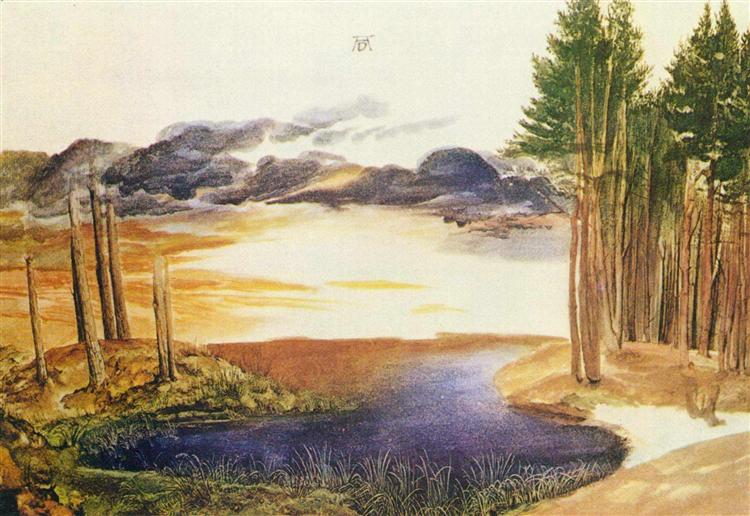
Dürer’s watercolor works primarily focused on natural subjects like plants, animals, and landscapes. His keen observational skills and love for nature allowed him to create incredibly accurate and lifelike depictions. One of his most famous watercolor paintings, “The Great Piece of Turf” (1503), showcases his ability to capture the intricate details and subtle color variations found in a seemingly ordinary patch of grass and weeds.
Albrecht Dürer’s contributions to watercolor art demonstrated the medium’s potential and helped pave the way for future artists to explore its possibilities. His meticulous approach to capturing the essence of the natural world in watercolor has inspired countless artists and solidified his place as one of history’s most influential watercolor painters.
J.M.W. Turner (1775-1851)
Joseph Mallord William Turner, or J.M.W. Turner, was an English Romantic painter who significantly contributed to the watercolor world. Widely regarded as one of the greatest landscape painters in history, Turner’s innovative use of color and atmospheric effects brought a new level of expressiveness to the medium. He was a master at capturing the sublime beauty of nature, often portraying dramatic weather conditions and powerful forces of the natural world.
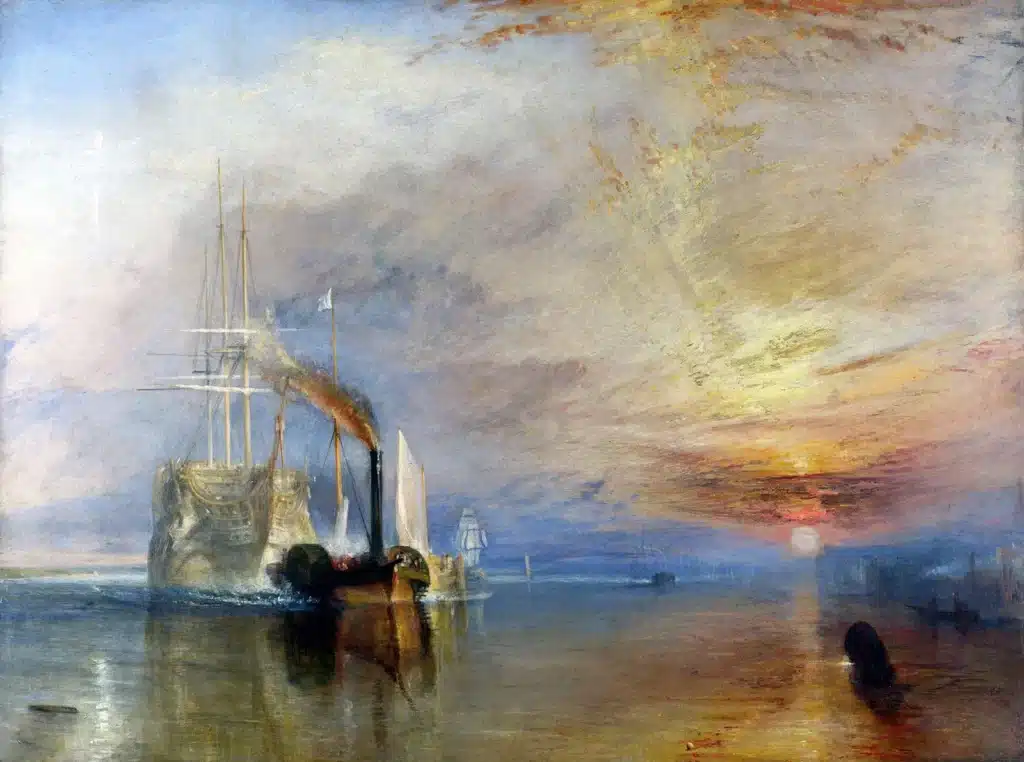
Turner’s watercolor works are characterized by their loose brushwork and luminous quality. He pioneered in exploring watercolor’s potential to create evocative, atmospheric scenes. His groundbreaking techniques, such as wet-on-wet painting and the use of transparent layers, allowed him to achieve an incredible depth of color and light. Turner’s mastery of watercolor would go on to influence generations of artists and solidify his place as one of the most influential figures in the medium’s history.
John Singer Sargent
John Singer Sargent (1856-1925) was an American painter known for his evocative portraits and masterful use of watercolor. Although he gained fame primarily as a portrait artist in oil, Sargent’s watercolor paintings are equally impressive and display his exceptional skill and understanding of the medium. In contrast to his formal oil portraits, Sargent’s watercolors often captured informal, intimate moments and picturesque landscapes during his travels across Europe and the Middle East.

His watercolor technique was characterized by loose, fluid brushstrokes, bold color choices, and a keen eye for capturing the play of light and shadow. He frequently left areas of the paper untouched, allowing the white of the paper to represent highlights and create a sense of luminosity. Sargent’s innovative approach to watercolor has left a lasting impact on the medium, as he fearlessly combined the transparency of watercolor with the boldness of oil painting, pushing the boundaries of what could be achieved in watercolor art. Today, John Singer Sargent is considered one of the most outstanding watercolorists of all time, and his work continues to inspire and influence artists worldwide.
Georgia O’Keeffe
Georgia O’Keeffe (1887-1986) was an American artist who is often regarded as the “Mother of American Modernism.” Though she is best known for her large-scale paintings of flowers, skulls, and desert landscapes, O’Keeffe also made significant contributions to the watercolor world. She began exploring watercolor early in her career, creating abstract and representational works demonstrating her exceptional ability to convey her subjects’ essence with minimal brushstrokes and a keen understanding of color.
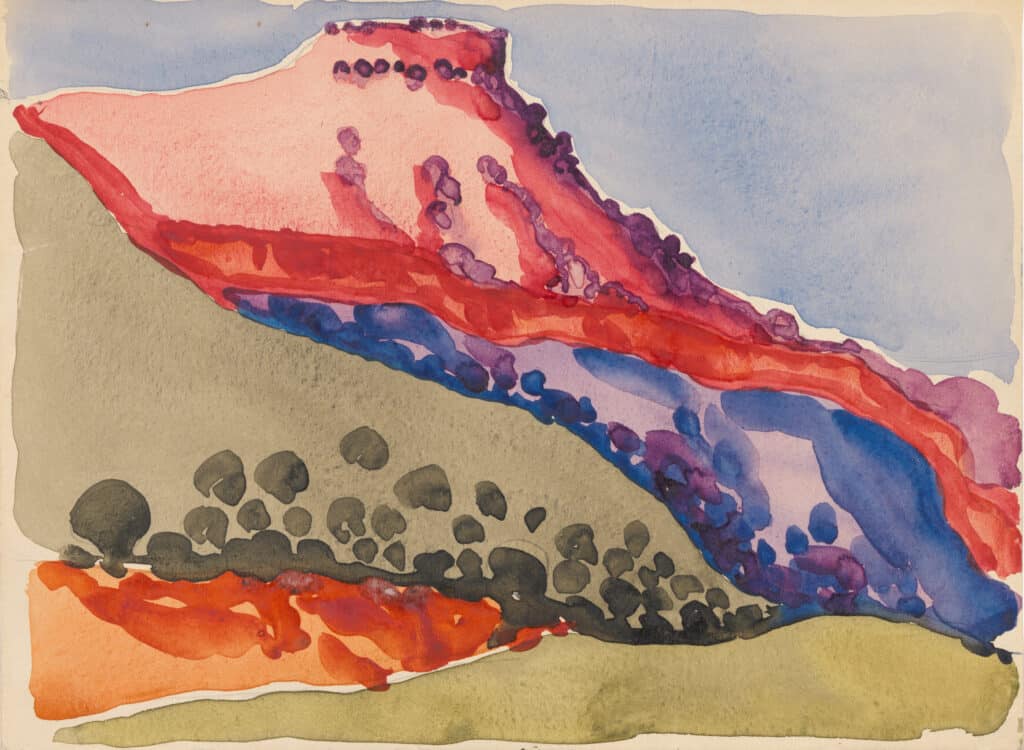
O’Keeffe’s watercolor paintings showcase her unique approach to the medium, using bold colors and simplified forms to create striking compositions. Her work in watercolor ranges from fluid, organic shapes to more structured, geometric forms. O’Keeffe’s mastery of the medium allowed her to manipulate the paint to achieve a wide range of textures and effects, often giving her paintings a sense of depth and dimensionality.
Throughout her career, Georgia O’Keeffe continued to push the boundaries of watercolor, inspiring countless artists to explore the medium’s potential. Her innovative techniques and distinctive style have left a lasting impact on the world of watercolor and solidified her place in art history as one of the most influential painters of the 20th century.
Winslow Homer (1836-1910)
Winslow Homer, an American landscape painter, and printmaker is considered one of the foremost watercolor artists in American history. Born in Boston, Massachusetts, Homer began his career as an illustrator, working for various magazines and newspapers. He later transitioned to oil painting and eventually discovered his love for watercolor.
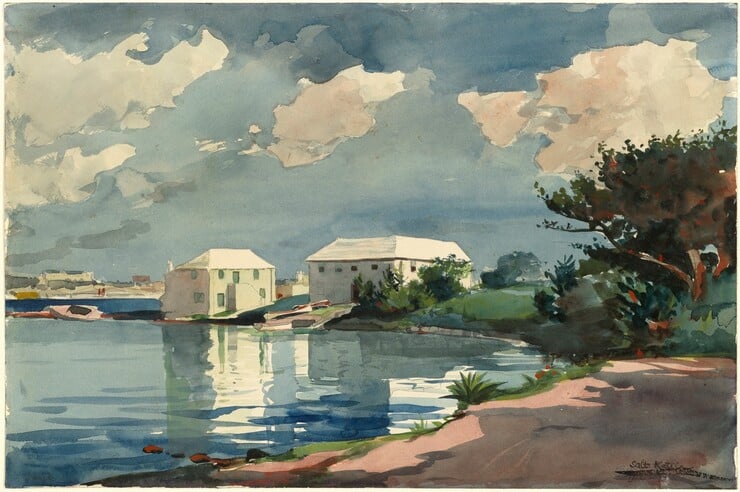
Homer’s watercolor works are characterized by their fluidity and mastery of color. He excelled at capturing the essence of his subjects, which ranged from the sea and maritime scenes to rural landscapes and everyday life. His innovative techniques and bold, expressive style helped to elevate watercolor from being seen as a mere sketching tool to a respected fine art medium.
Some of Homer’s most famous watercolor paintings include “The Blue Boat,” “Fishing Boats, Key West,” and “A Garden in Nassau.” His ability to capture the atmosphere and mood of his subjects made his watercolors stand out, and his influence can be seen in the works of many contemporary watercolor artists today.
Paul Klee
Paul Klee (1879-1940) was a Swiss-German artist who significantly shaped the modern art movement. Klee’s innovative approach to color and form made him one of the most influential watercolor artists of the 20th century. Initially trained in traditional drawing and painting techniques, Klee later embraced abstraction, exploring the relationship between color, line, and shape.
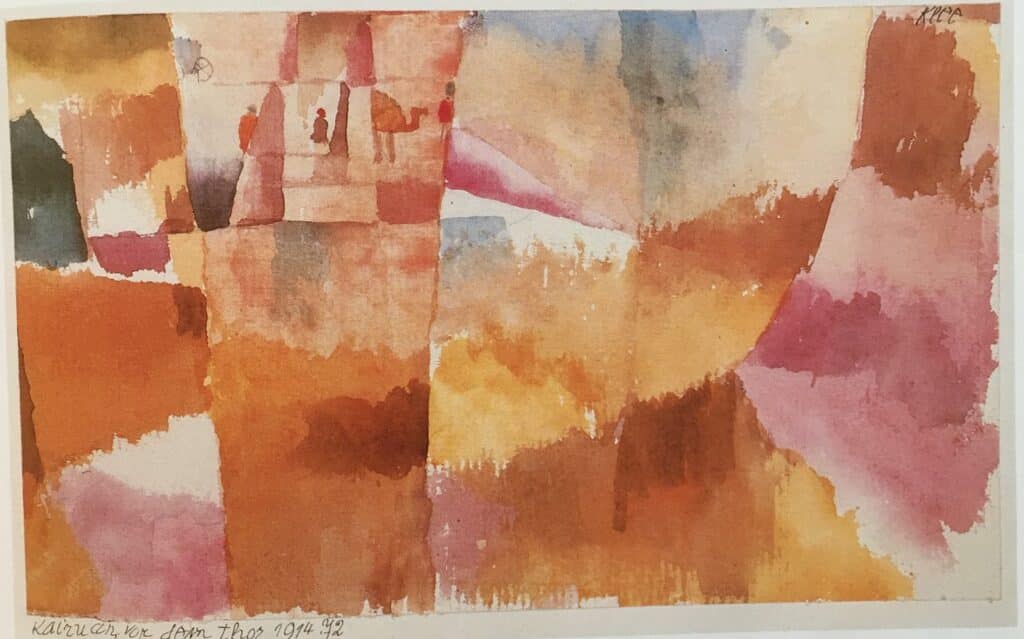
His watercolor paintings often exhibit a dreamlike quality, combining abstract elements with recognizable subjects to create a unique visual language. Klee’s work is characterized by his playful use of color, often using transparent washes and layers to create complex, luminous compositions. His fascination with color theory led him to develop new methods for color mixing and application, pushing the boundaries of what was possible with watercolor.
Some of Klee’s most famous watercolor paintings include “Fish Magic” (1925), “Twittering Machine” (1922), and “Ad Parnassum” (1932). These works showcase his mastery of the medium, blending color, line, and form in innovative ways that continue to inspire artists today. Through his extensive body of work, Paul Klee has solidified his place in art history as a pioneering figure in the development of modern watercolor painting.
Mary Cassatt (1844-1926)
Mary Cassatt was an American painter known for her tender and intimate depictions of women and children in everyday settings. Born into a wealthy family, she defied societal expectations by pursuing an art career, studying in Paris, and joining the French Impressionist movement. Cassatt’s choice of watercolor allowed her to capture the fleeting moments of domestic life with a sense of spontaneity and freshness.
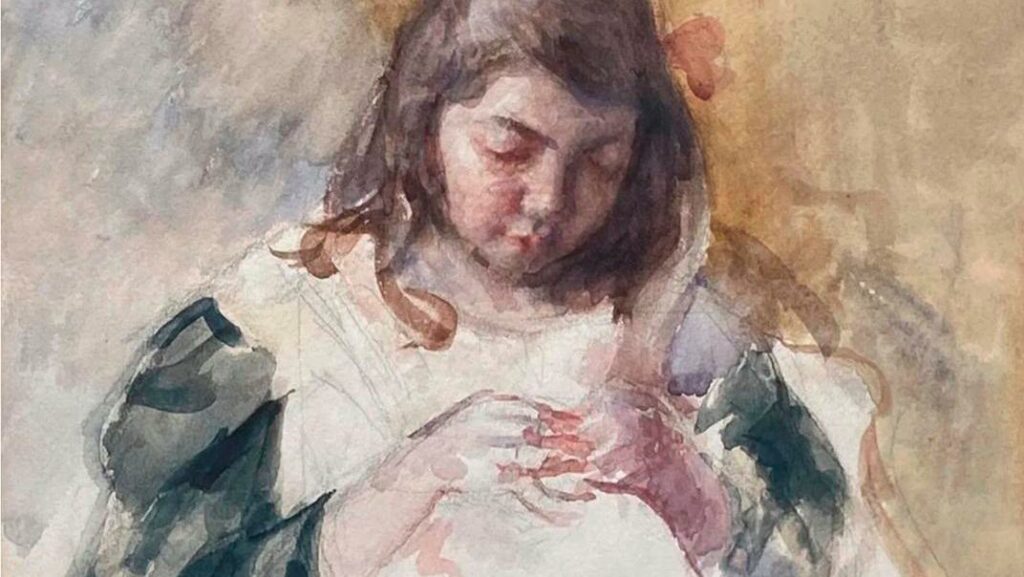
Her watercolor paintings are characterized by their delicate brushstrokes, soft color palette, and exceptional attention to detail. Cassatt skillfully used the transparency of the medium to create luminous effects and subtle variations in tone, giving her subjects an air of tranquility and warmth. She often experimented with different techniques, such as dry brushwork and washes, to achieve the desired texture and depth in her works.
Cassatt’s influence extended beyond her artwork, as she introduced European Impressionist art to American collectors. Through her connections and advocacy, she helped shape the American art scene and pave the way for future generations of female artists. Today, Mary Cassatt’s watercolor paintings remain a testament to her mastery of the medium and her lasting impact on the art world.
Emil Nolde
Emil Nolde (1867-1956) was a German-Danish painter, widely regarded as one of the foremost expressionist artists of his time. Nolde’s use of watercolor as a medium was bold and revolutionary. He favored a technique known as ‘wet-in-wet,’ where he applied wet paint to a wet surface, allowing the colors to blend and create unique effects. This approach enabled him to create striking, emotive pieces with an extraordinary intensity of color.
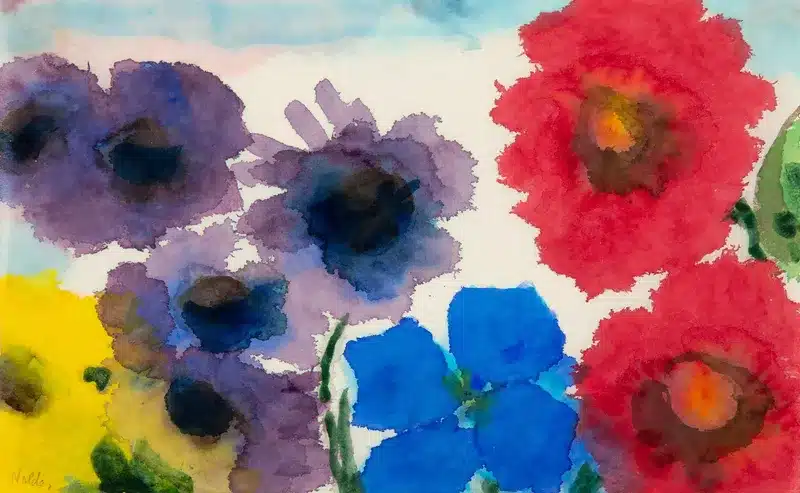
Nolde’s watercolor paintings often featured landscapes, flowers, and scenes from his travels, each imbued with a deeply expressive and emotional quality. His loose brushwork and bold color choices, often utilizing contrasting or complementary colors, resulting in an unmistakable style that has inspired countless artists over the years. Nolde’s watercolors are a testament to the power and versatility of the medium, proving that they can be used to create impactful and evocative works of art that stand the test of time.
Edward Hopper
Edward Hopper (1882-1967) was an American painter known for his striking realist style and ability to capture modern urban life’s essence. While Hopper is best remembered for his iconic oil paintings like “Nighthawks” and “Early Sunday Morning,” he was also a prolific watercolorist. In fact, he started his artistic career with watercolors, experimenting with the medium to create bold, evocative scenes that were both intimate and reflective of the American experience.
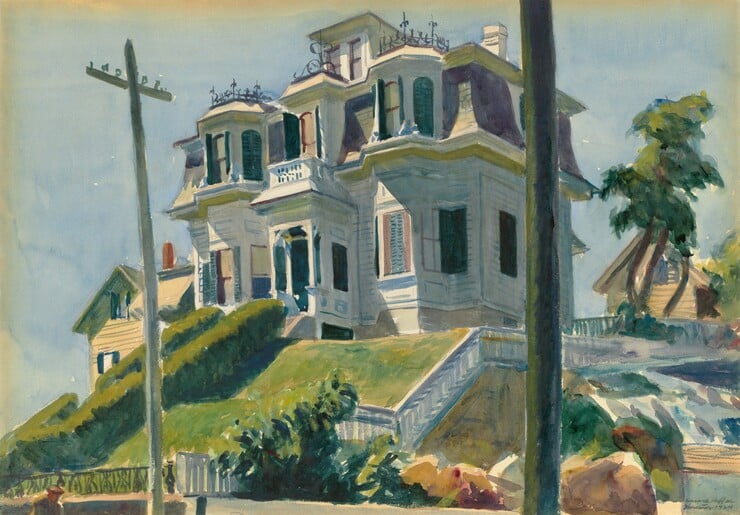
Hopper’s watercolor works often depicted the simple beauty of everyday life, capturing landscapes, architecture, and quiet moments in rural and urban settings. He created a sense of mood and atmosphere in his paintings, using loose brushstrokes and a keen understanding of light and shadow to convey the passage of time and the emotions of his subjects. Hopper’s watercolors showcased his incredible talent for storytelling through art, highlighting the drama and solitude that can be found in seemingly mundane scenes. His influence on the world of watercolor and American art cannot be overstated, as he inspired countless artists to explore the potential of this delicate and versatile medium.
Conclusion
In conclusion, the history of watercolor is rich and diverse, featuring a wide array of talented artists who have contributed to the development of the medium. From its humble beginnings to its current status as a respected and versatile art form, watercolor has evolved thanks to the creativity and skill of these influential painters tremendously. The artists highlighted in this post represent just a small selection of the many individuals who have shaped the watercolor world, each leaving their unique imprint. As you explore the works of these historical figures, may you find inspiration for your artistic journey and gain a deeper appreciation for the beauty and complexity of watercolor painting.



